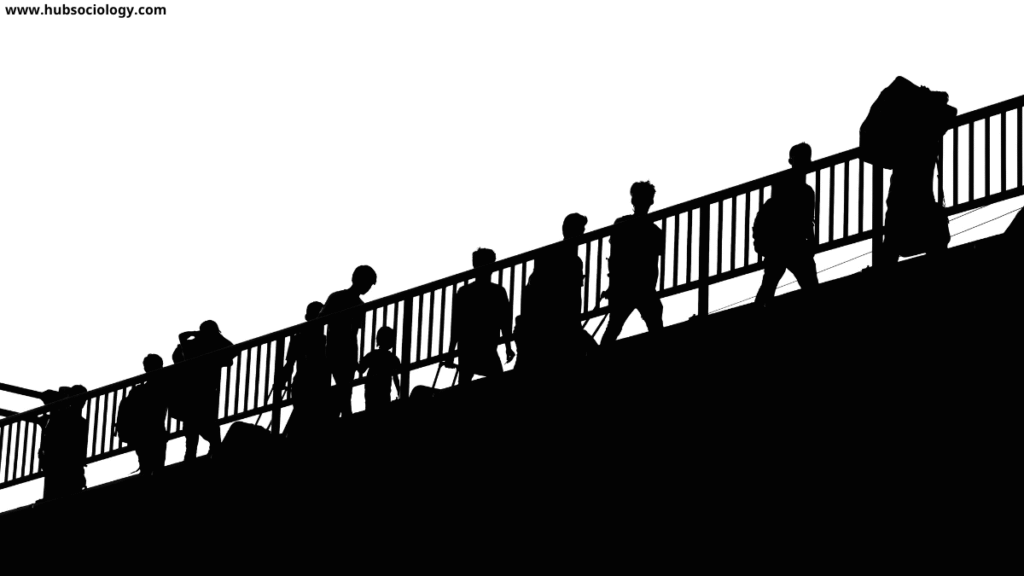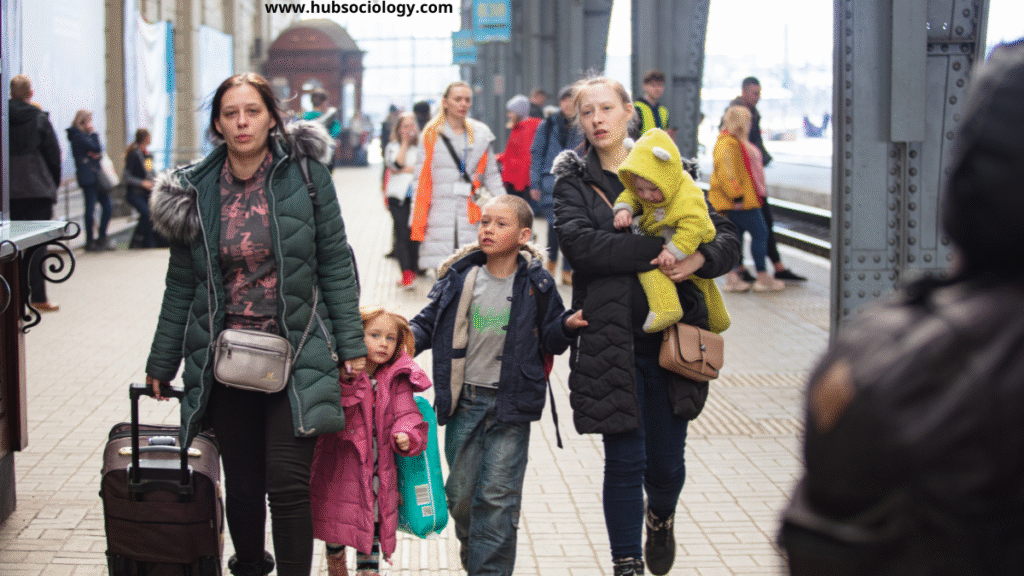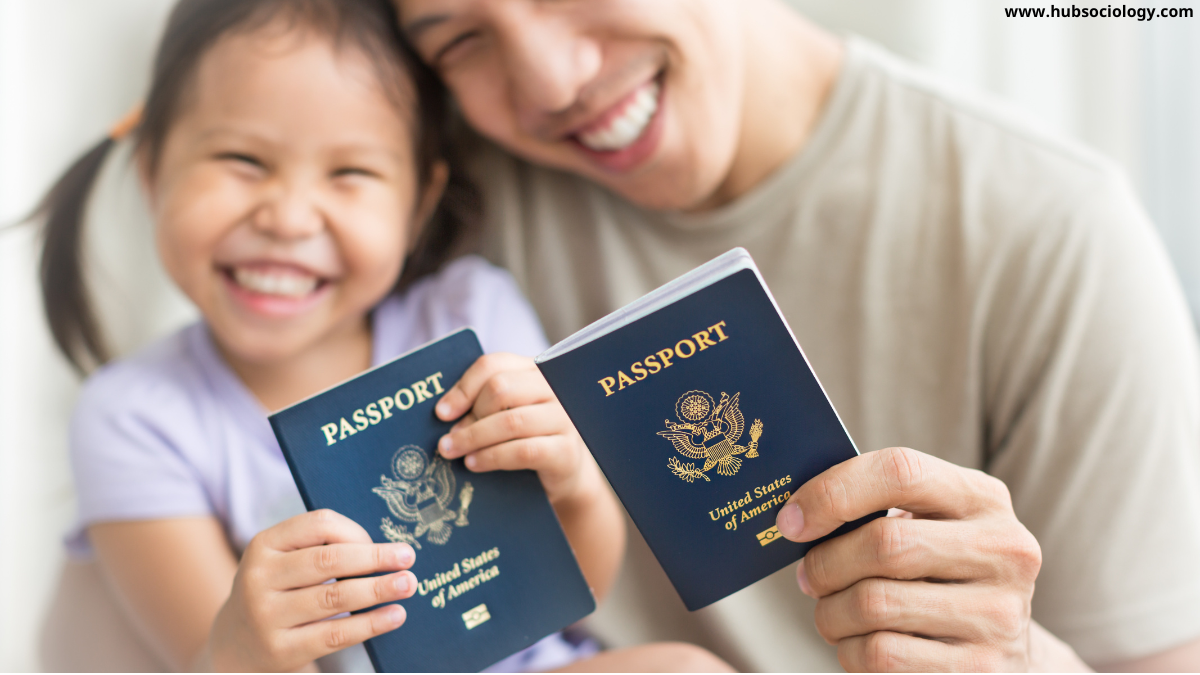Introduction
Globalization, as a multifaceted process, has fundamentally altered the way societies interact and organize themselves. It refers to the intensification of worldwide social relations, economic exchanges, and cultural interconnectedness. One of the most significant sociological consequences of globalization is migration—the movement of people across borders, regions, and continents. Migration has always been a part of human history, but in the era of globalization, it has become more frequent, complex, and multidirectional.
In sociology, globalization and migration are seen as interlinked phenomena that reshape identities, communities, and structures of power. While globalization creates opportunities for individuals to move, work, and settle in different parts of the world, it also generates tensions, inequalities, and cultural negotiations. Examining globalization and migration together allows us to understand how people adapt to changing social realities, how states manage borders, and how societies redefine belonging.

Globalization as a Driver of Migration
From a sociological standpoint, globalization accelerates migration in several ways:
- Economic Globalization: The expansion of multinational corporations, outsourcing, and global labor markets encourages the movement of workers. Many people migrate in search of better employment opportunities, either permanently or temporarily. For example, the Gulf countries’ demand for labor has attracted millions of South Asian workers.
- Technological Advancements: Communication and transport technologies reduce the cost and difficulty of migration. Cheap flights, instant digital communication, and online recruitment make cross-border movement easier.
- Cultural Globalization: Media, films, and social networks create aspirations to live abroad. Many migrants imagine life in “global cities” such as New York, London, or Dubai as more attractive and modern, influenced by cultural flows.
- Political Globalization: International organizations, treaties, and policies sometimes facilitate migration, such as regional agreements within the European Union. Conversely, global conflicts and wars force people to migrate as refugees.
Thus, globalization does not merely create the possibility of migration but actively structures its patterns.
Migration and Social Change
Migration, in turn, reshapes societies in profound ways. Sociologists highlight three dimensions:
- Demographic Change: Migration alters the population structure of both sending and receiving countries. For instance, countries like Japan face an aging population and increasingly rely on immigrant labor, while countries such as the Philippines have large diasporas abroad.
- Cultural Exchange: Migrants bring languages, religions, cuisines, and traditions, enriching cultural diversity. Global cities become melting pots of multiculturalism. However, this also raises issues of cultural integration and identity conflicts.
- Economic Contributions: Migrants often contribute significantly to host economies through labor, while remittances sent back home support families and local economies. For example, remittances form a substantial part of GDP in Nepal, Bangladesh, and Mexico.
Migration therefore becomes a mechanism through which globalization manifests itself at the local level, creating hybrid societies with complex cultural negotiations.

Theoretical Perspectives in Sociology
Sociologists analyze globalization and migration through different theoretical lenses:
- Functionalist Perspective: Migration is seen as fulfilling labor needs in the global economy. It balances resources between countries and provides manpower for industrial growth.
- Conflict Perspective: This view emphasizes inequalities. Migrants often face exploitation, discrimination, and precarious working conditions. Globalization benefits wealthy nations and corporations at the cost of poorer migrant workers. For example, undocumented migrants in Western economies are often underpaid and excluded from rights.
- World-Systems Theory: According to Immanuel Wallerstein, global capitalism creates “core” and “periphery” nations. Migration often occurs from peripheral to core countries, reflecting global inequalities.
- Transnationalism: Modern sociologists argue that migration is no longer one-way. Migrants maintain ties with their homelands while adapting to host societies. They live “transnational lives,” simultaneously belonging to multiple places.
These perspectives highlight that globalization and migration cannot be understood only in economic terms but must be studied through power relations, identity, and cultural integration.
Challenges of Migration in the Global Era
While globalization offers opportunities, it also produces new challenges:
- Identity Crisis and Integration: Migrants often struggle between assimilation and preserving their heritage. Issues of belonging and identity become central. Second-generation migrants may feel caught between two cultures.
- Social Exclusion and Racism: In many host societies, migrants face xenophobia, racism, or discrimination. The rise of anti-immigration politics in Europe and the United States reflects tensions between globalization and nationalism.
- Brain Drain vs. Brain Gain: Developing countries often lose their skilled workforce to developed nations, a phenomenon known as “brain drain.” While this benefits host nations, it can weaken the sending nations. However, some scholars argue for “brain circulation,” where skilled migrants return or contribute from abroad.
- Refugee Crisis: Global conflicts, climate change, and political instability have created unprecedented numbers of refugees and displaced people. Globalization connects societies, but it also magnifies inequalities and insecurities, making migration more urgent for survival.
Positive Dimensions of Migration in the Global Context
Despite challenges, migration also brings positive changes:
- Global Networks: Migrants create global communities linked through kinship, remittances, and technology. This strengthens intercultural understanding.
- Multiculturalism: Migration fosters cultural pluralism. Migrants enrich host societies with traditions, arts, and values, making cities more cosmopolitan.
- Social Remittances: Beyond money, migrants send back ideas, skills, and practices, influencing social change in their homelands. For example, migration has contributed to women’s empowerment and modernization in many South Asian villages.
- Global Solidarity: Diaspora communities often advocate for human rights, democracy, and humanitarian issues across borders, strengthening global civil society.
Case Examples
- Indian Diaspora: India has one of the largest diasporas in the world. Indian IT professionals in Silicon Valley illustrate how globalization creates opportunities for upward mobility, while migrant workers in the Middle East highlight issues of labor exploitation.
- Syrian Refugee Crisis: Global conflicts force migration on a large scale. The Syrian war created millions of refugees, testing global governance, humanitarian policies, and sociological debates on integration.
- Mexican Migration to the USA: Economic inequality and proximity have created continuous migration patterns. Migrants contribute significantly to the U.S. economy while facing debates over border control and citizenship.
Migration and Global Inequality
Sociologically, migration also exposes global inequalities. While elites move freely across borders as “global citizens,” poor migrants face visa restrictions, deportations, and limited rights. Saskia Sassen’s concept of “global cities” shows that migrants often form an underclass in metropolitan economies, working in low-paid but essential jobs.

Moreover, women migrants face “double marginalization,” experiencing both gendered and economic exploitation, especially in domestic work and care industries. Thus, globalization produces unequal forms of mobility, privileging some while restricting others.
Conclusion on Globalization and Migration
Globalization and migration are deeply intertwined, shaping societies in complex ways. Migration is not merely a flow of people; it is a sociological phenomenon that transforms identities, cultures, and structures of power. While globalization facilitates human mobility, it also reproduces inequalities, exclusions, and cultural tensions.
From the perspective of sociology, migration must be understood not just as a demographic or economic trend but as a dynamic social process that connects the local with the global. It challenges traditional notions of nation-state, belonging, and citizenship, forcing societies to rethink how they define community and identity in an interconnected world.
Ultimately, globalization and migration together embody the paradox of our times: they bring societies closer while simultaneously highlighting divisions. The task of sociology is to analyze these contradictions and explore pathways toward inclusive, equitable, and multicultural futures.
Do you like this this Article ? You Can follow as on :-
Facebook – https://www.facebook.com/hubsociology
Whatsapp Channel – https://whatsapp.com/channel/0029Vb6D8vGKWEKpJpu5QP0O
Gmail – hubsociology@gmail.com
Exam-Oriented Questions on Globalization and Migration
5 Marks Questions on Globalization and Migration
- Define globalization in a sociological sense.
- What is migration? Explain with one example.
- Mention two ways globalization influences migration.
- What is meant by “brain drain”?
- State two cultural consequences of migration.
10 Marks Questions on Globalization and Migration
- Discuss the relationship between globalization and migration with suitable examples.
- How does migration contribute to both sending and receiving countries?
- Explain the concept of “transnationalism” in the context of migration.
- What challenges do migrants face in the era of globalization?
- Analyze the role of remittances in shaping global and local societies.
15 Marks Questions on Globalization and Migration
- Critically examine the sociological theories (Functionalist, Conflict, World-Systems, and Transnationalism) that explain globalization and migration.
- “Migration is both an opportunity and a challenge in the age of globalization.” Discuss with reference to sociological perspectives.
- Evaluate the impact of globalization and migration on identity, culture, and social integration.
- Discuss how globalization has contributed to the refugee crisis and forced migration.
- Analyze the Indian diaspora as a case study of globalization and migration.

5 thoughts on “Globalization and Migration: A Sociological Perspective”